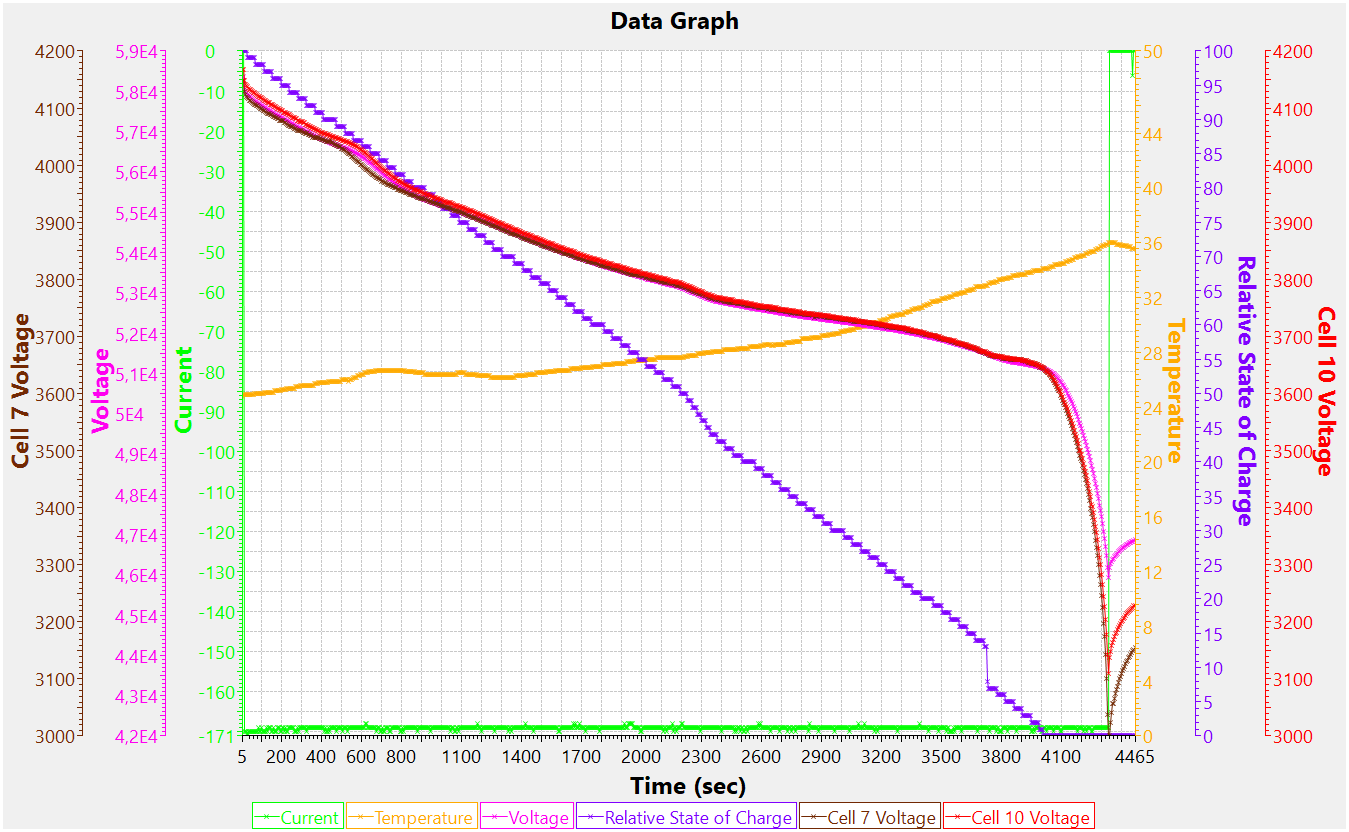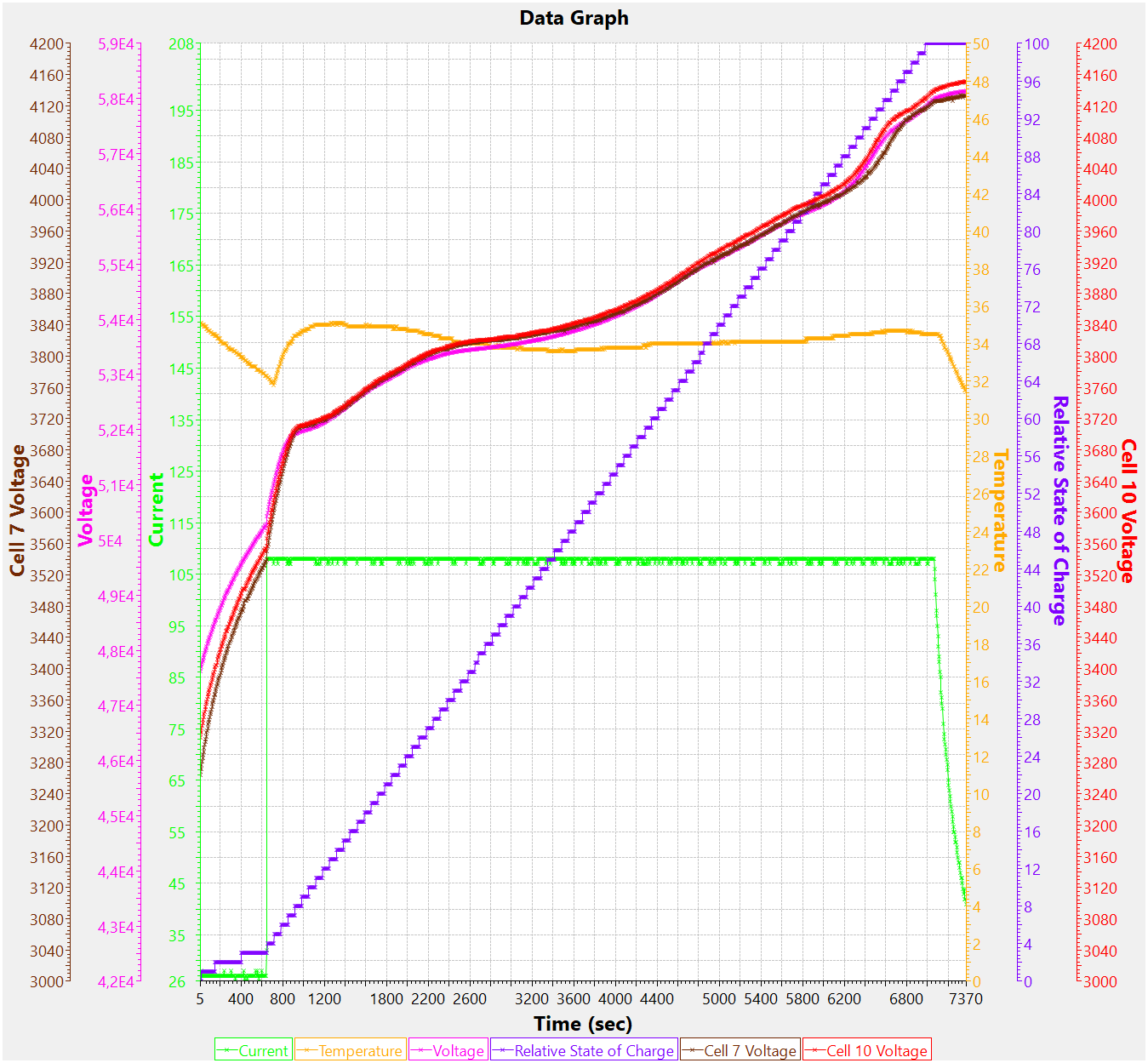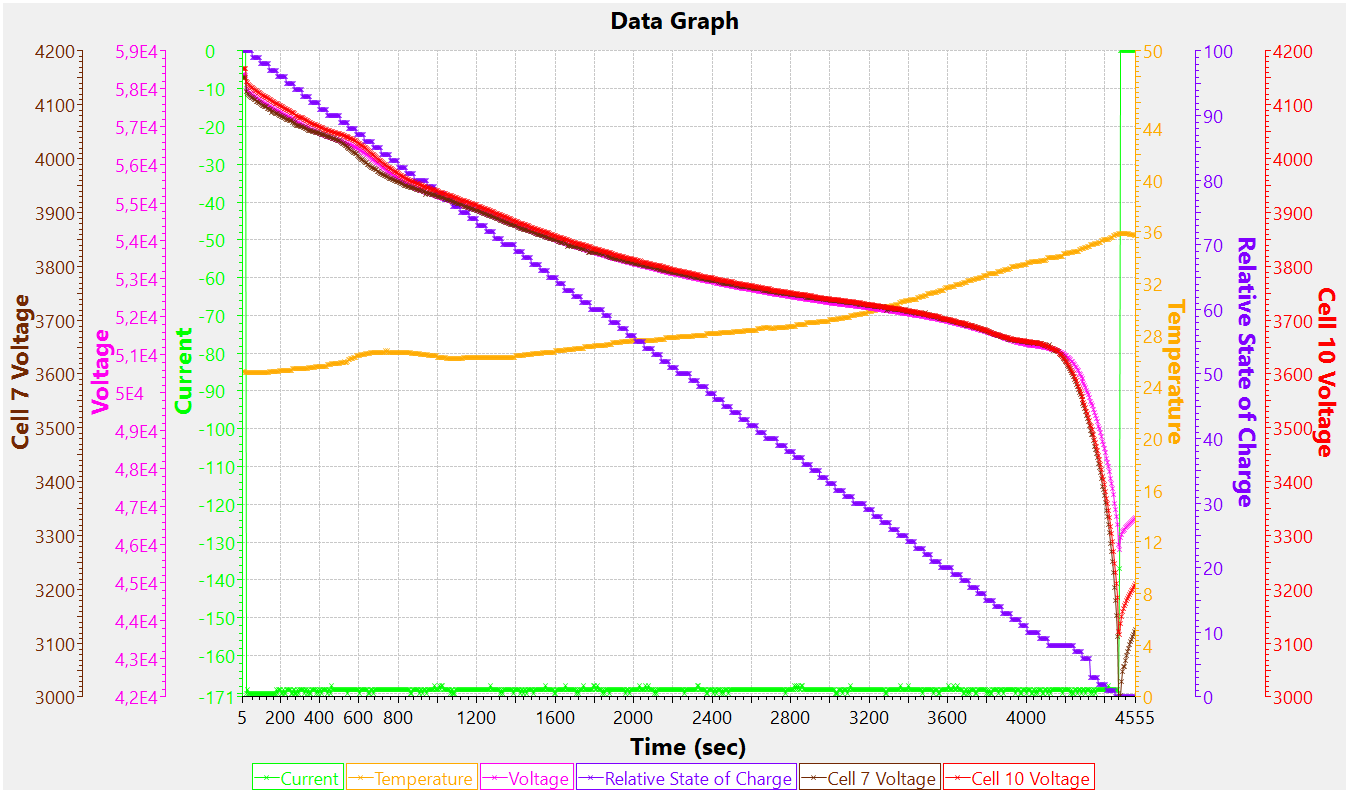Other Parts Discussed in Thread: BQ78350, GPCCEDV, BQ76940
Hi,
I've done the 6 tests low/high rate + temperature required for CEDV and I've received the resulting report detailed below. From this report I've 2 questions:
1. It says that "if EDVV bit is set to 1... ". Which is this bit? I think that it's not present for BQ78350... So, have I to multiply EMF and EDVR0 values?
2. The reported value of EDVR0=94086, exceeds the maximum which is 65535. Which value I should set here?
Thanks,
Marco.
Detailed report:
GPC CEDV tool, rev=53
Configuration used in present fit
ProcessingType=1
NumCellSeries=1
CellTermV=3000
LearnSOC%=7
FitMaxSOC%=9
FitMinSOC%=3
ChemType=1
ElapsedTimeColumn=0
VoltageColumn=1
TemperatureColumn=2
CurrentColumn=3
CEDV parameters resulting from the fit. If EDVV bit is set to 1, EMF and EDVR0 have to be multiplied by the number of serial cells when written to data flash
EMF 51954
EDVC0 101
EDVC1 0
EDVR1 1
EDVR0 94086
EDVT0 5773
EDVTC 9
VOC75 3935
VOC50 3808
VOC25 3752
Recommended SOC deviation tolerance at EDV2 point is < 5% for low temperature and <3% for room and high temperature
Deviations for this set of parameters are given below for each file
file SOC error, % pass
roomtemp_lowrate.csv -1.85752477153744 1
roomtemp_highrate.csv -0.0948588443248655 1
hightemp_lowrate.csv -1.66730129255415 1
hightemp_highrate.csv -0.379089430102143 1
lowtemp_lowrate.csv -1.68069894084773 1
lowtemp_highrate.csv 1.65026127901974 1
Deviations are within recomended range. CEDV parameters are suitable for programming the gauge
CEDV parameters resulting from the fit. If EDVV bit is set to 1, EMF and EDVR0 have to be multiplied by the number of serial cells when written to data flash
EMF 51954
EDVC0 101
EDVC1 0
EDVR1 1
EDVR0 94086
EDVT0 5773
EDVTC 9
VOC75 3935
VOC50 3808
VOC25 3752





